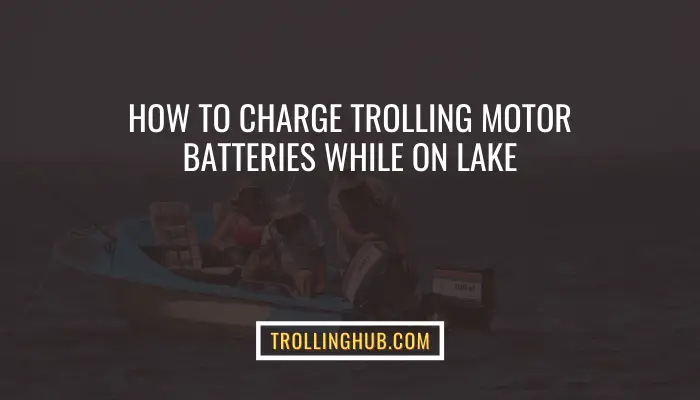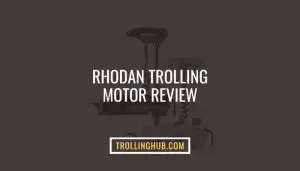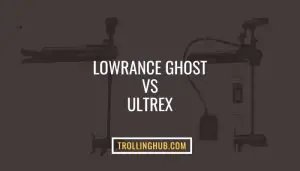
Nothing like going fishing during the weekend, or enjoying some quality beer time on the vacation in the middle of the lake. It’s quiet, fun, and nothing to disturb the peace.
Except for a dead battery of course!
Sure nobody sensible would ever head for a trolling boat ride without fully charged batteries (exceptions are always there), yet the battery can run out of power anytime due to any reason. Charging the battery is no big deal while close to the land; but on the lake?
No need to stress over that and ditch the idea of driving a trolling boat, knowing how to charge trolling motor batteries while on lake can help you on the long way to keep the motor and the enjoyment running throughout the entire expedition.
Charging The Battery Off-Shore
For all the people wondering how to charge a boat battery on the water, you should know that it’s not that complicated as it might appear to be. With a little bit of knowledge on charging and electric energy, along with lots of courage to handle it all by own self, it doesn’t take too much to get the battery all pumped up for continuous service.
The thing is, which method to go for? As there are several!
How do you charge a trolling motor battery without power?
If you ask your buddies or someone pro, you’re most likely to hear a lot of praise for solar charging. The ultimate way to charge a trolling motor battery without power.
Solar charging is definitely not a bad idea. Indeed, quite amazing on a sunny day. Especially when you’re not that bothered about the whole arrangement.
Then there’s that classic way of drawing power through wires. That comes with two options to make charging easier for all folks. Portables and non-portables.
Now which way you want to run, it’s up to you.
Charging With Solar Power
To charge the battery using the sunlight, you got to make some arrangements first. Purchase a solar panel to trap the energy and an inverter for converting the energy.
The storage unit included with the solar panel should have sufficient capacity to run the boat; otherwise, it’ll be a waste of money. In order to avoid that, have a good read of the watt capability of the boat battery and purchase a panel that matches that parameter.
The solar panel has to be on the roof to be in direct contact with sunlight. So set up the panels at the top first. Be cautious to not put it in a zone where you’d like to relax, you don’t want to accidentally touch the fully-functional panels.
To combine the raw energy with the electric capacity of the battery, the DC power has to be converted to AC power, somewhere around 110v. That’s where the inverter comes, to change the DC waves into AC waves.
And then you got to connect the storage unit to battery terminals for charging and running the motor.
Pros:
- You don’t have to rely on an electric outlet, so looking for that source is never mandatory.
- Works fine as a trolling boat motor as it doesn’t need a lot of energy unless you’re powering lots of equipment with it.
Cons:
- Setting up the whole system is quite expensive.
- Not effective in rain or dull weather.
Charging With Portable Charger
Here’s a method for the traditional electric energy admirer. Use a portable charger, the name practically gives away why you should use it!
The charger includes wires with positive and negative ions for powering the battery. Connect it to any 120v outlet after attaching the wires to the battery’s respective terminals. Turn the power on the outlet for the process to begin.
Pros:
- The charger can be carried and used anywhere for charging purposes and doesn’t always necessarily have to be close to the battery.
- A cheap option for charging.
Cons:
- Can’t perform without drawing power from a 120v outlet, so the portability is meant only for connecting with the battery.
- Charging is time-consuming.
Charging With Built-in Charger
In case you want a fast electric way, the built-in charger is the option for you. It comes attached to the system, so no chance of losing it or having to find the perfect spot.
You have to find a 120v outlet to connect and use it, and that’s about all.
Pros:
- The built-in position protects it from damage.
- Easier to use.
- Charges faster.
Cons:
- Too expensive compared to the portable one.
- Becomes useless when the battery’s damaged.
So yeah, these are the charger options you can try to power the boat.
How do you charge a battery while fishing?
You connect the fishing hook to the battery terminals. JUST KIDDING!
It’s normal to wonder whether it is possible charging trolling motor batteries while running.
It is possible. Have to make sure the trolling motor charging system is capable of that though.
Regarding solar panels, the panel should be able to comprehend a lot more watts than what it takes for the trolling boat to run while feeding on the energy.
While many trickle and built-in chargers are cool with trying to run the motor in a charging situation, it is better to ensure that the battery system wouldn’t get damaged amidst all of this. You can revive a dead battery, not a damaged one.
And the watt capability is still a major factor.
So there’s the answer. Can you charge a boat battery while connected? With the right charger, sure you can!
What is the best way to charge a deep cycle battery?
While the lithium-ion batteries are ruling everywhere as we speak, the trolling boat motor is still pretty much the deep cycle (lead-acid) battery’s game, and nobody can argue about that.
Given the power dynamic of trolling boats on the water, the lead-acid battery suits it better, and is less expensive than lithium-ion ones.
The non-stop discharge of power in the lower level helps with continuous charging while running as well. A portable charger is hands down the best deep cycle battery charger in that case. Its slow charging pace balances out the battery’s way of discharging.
You can check out ADPOW 5A 12V Automatic Smart Battery Charger if you need a trickle charger for your deep cycle battery.
Point to be noted though, while many people favor deep cycle batteries like standard lead-acid or AGM batteries, lithium-ion batteries are the go-to batteries of many boat owners these days, despite being so crazy expensive.
It all depends on what’s good for the motor.
How to charge with no outlet available?
Yes, it’s a big issue, how to charge a boat battery on the water if the desired outlet is not available and there is no time or way for utilizing solar energy?
You can be ready for that scenario with some regulator on board. (Literally!)
Use the stored energy of the outboard motor to power the battery. For that, you got to set up a cable connection by mounting a regulator to the outboard motor and linking the cable to the battery. The wires should be attached to the right terminals, however.
Can you charge trolling motor batteries using jump-start equipment?
Jump-starting might seem like a splendid method when finding ways for how to charge trolling motor battery without shore power; and yeah, it kinda is, If you have a battery-powered jump-starter kit, or a backup battery and jumper wires to work with.
Nothing to explain about how jump-starting is going to save the day. It sends short electric bursts to power the motor. To send that power, the jumper or other jump-starter equipment should be connected to an energy source, the reason why you need another charged battery or battery-powered equipment.
In the case of a manual jumper, you have to link its wires to the respective terminals of the dead and the active batteries. Another battery is not needed, attach the wires of the equipment to the terminals to send waves to jump-start the battery.
The red wires are meant for positive terminals, and the black wires are for negative ones.
You should keep in mind, jump-starting is not like regular charging.
Conclusion
Little idea about how to charge trolling motor batteries while on lake can always save your day; AND having the right charger and power-drawing source.



